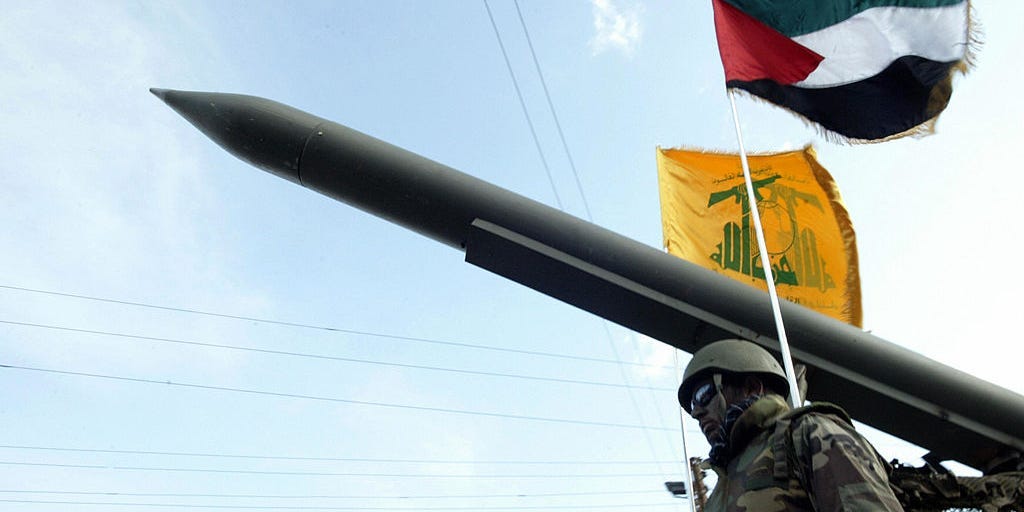Hezbollah may use part of Russia’s playbook in Ukraine to overwhelm Israel’s air defenses.
Military analysts expect Hezbollah will take inspiration from Vladimir Putin’s forces to launch swarms of drones and mass missile attacks on Israel’s air defenses, according to The Wall Street Journal.
The Lebanon-based group could also target key military bases, ports, and the country’s electrical grid, the publication said.
It comes after Lebanon suffered its deadliest single day for decades on Monday. According to Lebanese health officials, Israeli strikes have killed 558 people and led thousands to flee for safety.
Speculation is growing that Israel may be poised to launch a ground invasion of south Lebanon, but analysts say that Hezbollah has become a more powerful and sophisticated force since its last war and can hit back hard in response.
And if it decides to strike back against Israel, the example of Russia could prove valuable.
“It’s not going to be a walk in the park,” Assaf Orion, a retired brigadier general from the Israeli military told the Journal. “There’s no way we’re not getting a bloody nose.”
Hezbollah is believed to have been stockpiling missiles, with the Center for Strategic and International Studies in a report in March saying that it may have between 120,000 and 200,000 of the weapons.
Mesrob Kassemdjian, a teaching fellow at the Department of Politics and International Studies at SOAS, University of London, told France 24 that Hezbollah has the capacity to strike targets deep inside Israel, including roads, military sites, and airfields.
“These kinds of strikes would come as part of a prolonged rocket barrage and potentially drone swarms, which could overwhelm the Israeli ‘Iron Dome’ system and leave Israel open to some critical hits in its territory,” he said.
“So the conflict will enact the heavy toll, not only for Lebanon, but also for Israel.”
US and Israeli officials in June told CNN that Hezbollah could likely breach Israel’s Iron Dome air defenses in the north of the country, particularly with a large-scale attack using precision-guided missiles.
Similarly, Russia has attacked Ukrainian cities and infrastructure with mass missile and drone strikes, in some cases overwhelming Ukrainian air defenses.
Analysts say that Hezbollah has likely learned valuable lessons from working with the Russian military in Syria.
“Hezbollah apparently learned quite a bit from the Russian military, including the ability to conduct offensive maneuver warfare,” said The Washington Institute for Near East Policy in an August report.
According to the report, support for groups like Hezbollah is part of the Kremlin’s strategy of countering US power in the Middle East by strengthening its adversaries.
And the US government last November said that the Russian Wagner mercenary group may also have been preparing to supply Hezbollah with Russian Pantsir-1 air defense systems, in a further indication of strengthening ties between the militia and Russia.
The latest round of conflict between Israel and militias aligned with its arch-foe Iran began on October 7, when Hamas launched terror attacks in Israel and Israeli forces invaded Gaza.
Hezbollah launched missile attacks on northern Israel in solidarity with Hamas, while the US pledged support for Israel if attacked and the Kremlin shored up support for its regional allies.
The Washington Institute said that in the wake of the October 7 terrorist attacks Russia had “aligned even more closely with destabilizing anti-American forces in the Middle East.”
Read the full article here
















